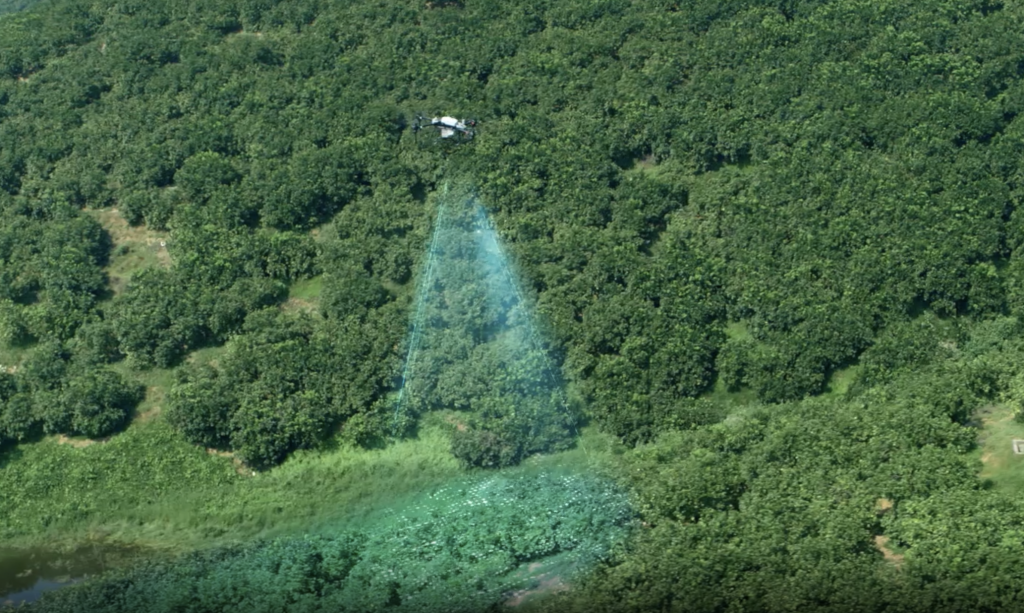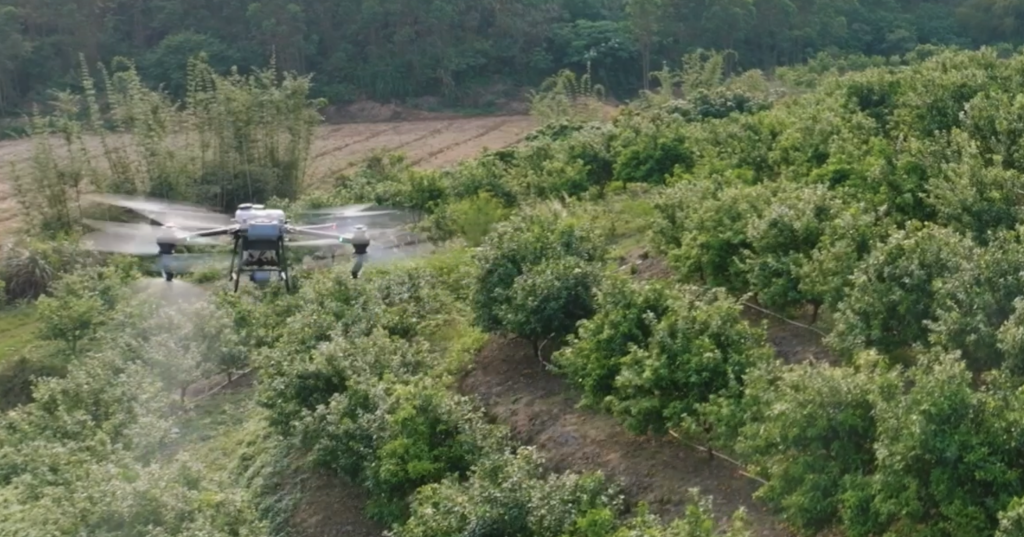The use of drones in agriculture is transforming how plantations operate. What used to take hours or days with manual labor can now be done faster, more accurately, and with less waste. For agri businesses managing hundreds or even thousands of hectares, drone spraying has become an essential investment for modern farming.
Two of the most advanced models from DJI, the Agras T40 and Agras T50, are designed for professional use in medium to large-scale plantations. Both deliver outstanding performance, but they are built for slightly different needs.
The DJI Agras T50, launched as the next generation after the T40, brings several upgrades in efficiency, stability, and precision. If you’re considering upgrading or investing in a drone fleet, understanding their differences will help you make the right choice.

8 Key Comparisons Between DJI Agras T40 and DJI Agras T50
1. Payload Capacity and Spray Rate
Both drones share a similar tank size—40 liters (10.5 gallons) which makes them suitable for medium and large-scale plantations. However, the Agras T50 is equipped with a more efficient dual-atomized spraying system that allows for a maximum spray rate of up to 24 liters per minute, double that of the T40’s 12 liters per minute.
The result? The T50 can cover the same area in less time while maintaining uniform spray distribution, reducing overlaps and saving chemical use.
2. Handling Slopes and Terrain Performance
Terrain is one of the biggest challenges for plantation spraying. The Agras T40 performs well on gentle slopes up to 30°, while the Agras T50 has improved its flight stability and terrain-following capability, handling slopes up to 50°. For plantations with undulating or hilly terrain such as palm oil or tea estates. This upgrade ensures more accurate and safer spraying results.
3. Flight Speed and Productivity
Speed directly affects operational efficiency. The Agras T40 can fly up to 7.5 m/s, while the T50 reaches 10 m/s, allowing it to cover more ground in less time. In field operations, that translates to around 30% faster spraying cycles, making the T50 more suitable for large plantations aiming to optimize manpower and flight hours.
4. Spray Rate and Spreading Capacity
While both models can spray liquids and spread granules, the T50 leads in both aspects. T40 has 40 L tank, 12 L/min spray rate, 50 kg spreading capacity. While T50 has 40 L tank, 24 L/min spray rate, 75 kg spreading capacity. The T50’s upgraded design also includes a wider and more stable spread pattern, reducing the number of flights needed for fertilizer or seed distribution.
5. Flow Control and Flexibility
The Agras T50 introduces a solenoid valve system, giving users more precise control over liquid flow. Operators can switch between 4.23 gallons per minute (standard) and 6.34 gallons per minute (with four-sprinkler setup), allowing for flexible adjustment based on crop type or density.
The Agras T40 uses a mechanical system with a maximum flow of 3.17 gallons per minute, which, while reliable, is less adjustable.
For agri-business clients managing various crop types and application methods, the T50’s flexibility makes it more versatile for different field conditions.
6. Advanced Operation and Ease of Use
Both drones run on DJI SmartFarm software, simplifying mission planning and real-time monitoring. However, the T50 introduces several user-friendly upgrades:
– Faster calibration and setup time
– Better integration with DJI Dock and RTK positioning
– Real-time spray monitoring via the new flight controller
These features make the T50 not only more precise but also easier to manage for teams operating multiple drones simultaneously.
7. Obstacle Avoidance and Safety Features
Safety is essential in large-scale spraying operations. The Agras T50 enhances safety with dual Active Phased Array Radars at both front and rear, combined with binocular vision sensors that enable full 360° obstacle detection.
This allows the T50 to detect smaller obstacles and maintain accurate flight paths even in dense or low-light environments.
The T40, though equipped with radar and vision systems, has a narrower detection range, adequate for open-field use but less ideal for plantations with trees or varied topography.
8. Durability and Weather Resistance
Both drones are built for harsh agricultural conditions with IP65-rated protection against water and dust. The T50’s components, however, are redesigned for easier field maintenance. Its arm and nozzle assemblies can be replaced faster, minimizing downtime.
For plantations operating daily spraying cycles during planting or disease-control periods, this advantage can make a significant operational difference.

So, Which Drone Should You Choose?
If your plantation operates on flat or semi-flat terrain, and you prioritize proven reliability at a lower investment, the DJI Agras T40 remains an excellent choice. If your operations cover large or mixed-terrain plantations and you need to complete more hectares per day with precise flow control and enhanced automation, the DJI Agras T50 is the smarter long-term investment.
Why Choose Terra Agri
Terra Drone Agri is an experienced provider of DJI agriculture drones and spraying solutions in Indonesia and Malaysia. Our team has helped plantations across the region implement drone spraying systems using the DJI Agras T40 and T50, covering thousands of hectares efficiently.
With Terra Agri, you’ll receive:
– Professional consultation to match the right drone with your field conditions
– Operator training and technical guidance
– After sales service and genuine spare parts availability
– Operational support to ensure consistent spraying performance
Choosing the right drone is just the first step, partnering with Terra Agri ensures your investment delivers long-term results.

